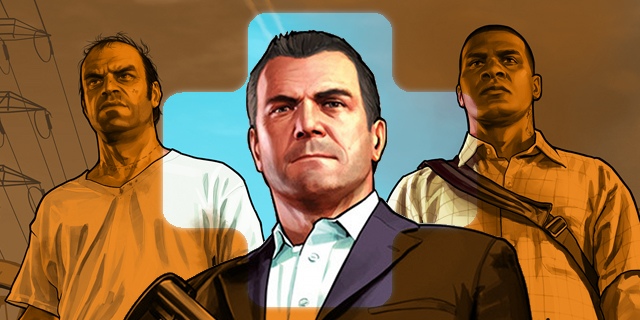
It seems Grand Theft Auto V is on most people’s minds these days, and for good reason. With any new GTA game, there are conversations about its importance in medium, some of the game’s more controversial scenes and, most importantly of all, the three protagonists. While GTA V isn’t the first game to introduce multiple protagonists, it is the first of its scale that split the story between the protagonists and allows you to switch between them at will.
Conceptually, it’s a neat trick, but it adds a whole new dynamic to a series that could have easily become stale. Most importantly of all, it shows how such a narrative can work, which leads me to believe it could have a place in other games as well.
READ MORE

This column contains full story spoilers for Brothers, so if you haven’t had a chance to play it yet, don’t read on. Also, go play it. You’ll thank me later.
Last time, I discussed fundamental game mechanics that help certain games stand out when they might not otherwise. Gunpoint was the prime example, with its excellent jumping mechanic laying the groundwork for the rest of the game’s brilliant design. Sometimes, however, this singular mechanic can not only help a game stand out, but make its story more impactful as a result.
READ MORE

Games are a compilation of many different elements carefully pieced together to make a whole, cohesive experience. At least, that’s how it usually goes. Often times some parts will be stronger than others, which is when it becomes clear on which mechanics or design ideas the developer focused the most. Maybe the story fell by the wayside as a result, or the visuals leave something to be desired, but the gameplay itself is fun. Other times you’ll be left with a game with different pieces that work well on their own, but don’t gel together quite as well as one would hope.
There are those rare occasions, however, when one element both shines above the rest and manages to make the rest of the game seem that much more exciting and well-designed as a result. The other parts are serviceable, but they wouldn’t work without that singular piece of the puzzle that keeps it all from falling apart (or at least losing its luster). READ MORE

We’re slowly moving into an always-connected world. This is something many people seem to reject, yet the potential for some (though not all) games is exciting. People were quick to dismiss Microsoft’s policies for the Xbox One, especially pertaining to the daily check-in. It was for good reasons, mind you, as the benefits of such a system were unclear. That being said, with the potential of “the cloud” being something Microsoft (and arguably Sony) wants to push with the new hardware and many upcoming games seemingly focused on retaining always-online elements (or at least allowing for more beneficial online features), I find it all quite exciting. READ MORE

This has been an ongoing discussion for quite a while now, but certain company policies have made the topic of game preservation something worth talking about again. I originally began writing this after Microsoft’s Xbox One debacle involving its online requirements and game installs. Things were pushed back once the issue was resolved and Microsoft did a complete turnaround on the policies that made seemingly everyone despise their upcoming console. With the potential threat of our current downloadable games disappearing and the all-digital future companies want to push, though, this is something worth examining regardless of policy changes. READ MORE
























